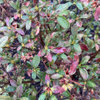Sam, did you ever ID this osmanthus?
Dave in NoVA • N. Virginia • zone 7A
9 years ago
Related Stories

MOST POPULARA Fine Mess: How to Have a Clean-Enough Home Over Summer Break
Don't have an 'I'd rather be cleaning' bumper sticker? To keep your home bearably tidy when the kids are around more, try these strategies
Full Story
EVENTSSee Where America's Most Celebrated Furniture Maker Lived and Worked
Walk with us through the Southern California home and studio of Sam Maloof as events honoring his centennial kick off
Full Story
LANDSCAPE DESIGNIs It Time to Consider Fake Grass?
With more realistic-looking options than ever, synthetic turf can be a boon. Find the benefits and an installation how-to here
Full Story
HOUZZ TOURSMy Houzz: 2 Dwellings Keep Things All in the Family
Grandparents get a newly built guest cottage in Portland, while the main bungalow benefits from a major overhaul
Full Story
HOUZZ TOURSMy Houzz: A Surprisingly Light Lakeside Log Cabin
Light gray paint and lots of natural light take this cabin on a Michigan lake out of moody country
Full Story
Houzz Tour: A House Built for the Long Term
The designers of this one-of-a-kind home made the most of its challenging location to deliver enduring comfort and style
Full Story
MAN SPACESWhy Men Really Do Need a Cave
Don't dismiss cars, bars and the kegerator — a man space of some kind is important for emotional well-being at home
Full Story
KITCHEN DESIGNHistoric Stone Barn Now a Country Farmhouse Kitchen
A designer carves out a cooking and dining space while carefully preserving the protected 17th-century structure
Full Story
VACATION HOMESHouzz Tour: Scottish Farm Cottage Looks to Sun and Stars
A sheep field is home to a small, energy-efficient house that pulls ideas from mobile home design and raises the style level
Full Story
FARM YOUR YARDHow to Build a Raised Bed for Your Veggies and Plants
Whether you’re farming your parking strip or beautifying your backyard, a planting box you make yourself can come in mighty handy
Full StoryMore Discussions









sam_md
Embothrium
Related Professionals
Burlington Landscape Contractors · Mooresville Landscape Contractors · Brownsville Landscape Contractors · Cincinnati Landscape Contractors · Clark Landscape Contractors · Fort Payne Landscape Contractors · Homewood Landscape Contractors · Mesa Landscape Contractors · Wheat Ridge Landscape Contractors · Riverside Window Contractors · Gardere Window Contractors · Mableton Window Contractors · The Woodlands Driveway Installation & Maintenance · Lake Arrowhead Decks, Patios & Outdoor Enclosures · Spokane Decks, Patios & Outdoor EnclosuresDave in NoVA • N. Virginia • zone 7AOriginal Author
Embothrium
davidrt28 (zone 7)
Dave in NoVA • N. Virginia • zone 7AOriginal Author
davidrt28 (zone 7)
Dave in NoVA • N. Virginia • zone 7AOriginal Author